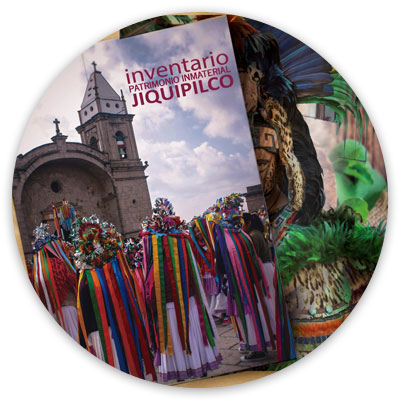Propuesta de salvaguarda del Patrimonio Cultural Inmaterial desde el enfoque del <i>Slow Design</i>. Caso: el maguey como patrimonio
DOI:
https://doi.org/10.24310/Idiseno.2022.v17i.14954Palabras clave:
Diseño Gráfico, Patrimonio Inmaterial Cultural, Slow Design, Grupos Vulnerados, Desarrollo SostenibleResumen
Hablar de Patrimonio Cultural, remite en ocasiones al pasado de los pueblos y su esplendor, sin embargo, en las últimas décadas y a raíz de la aplicación de la Agenda 2030, emitida por la ONU, se ha convertido en una prioridad la generación de estrategias para cumplir con el desarrollo sostenible.
El objetivo de éste texto es mostrar una propuesta desde la disciplina del diseño gráfico, retomando el enfoque del “Slow Design” para conformar un andamiaje teórico metodológico, aplicado en casos de salvaguarda del patrimonio inmaterial de los pueblos latinoamericanos. Los antecedentes que se consideran para dicha propuesta son los trabajos desde la UNESCO, así como el trabajo desarrollado por Hilario Topete y Laura Arizpe en el caso específico de México.
Se desarrolla en algunos apartados en donde, en un primer momento se describe el concepto de patrimonio, sus tipos e interacciones desde la mirada del diseñador, posteriormente se explica la teoría de sustentabilidad aplicada en el diseño, encontrando al slow desing como enfoque para trabajar las necesidades de los pueblos vulnerados en Latinoamérica y finalmente se expone un caso trabajado desde la experiencia del diseñador.
Descargas
Métricas
Publicación Facts
Perfil de revisores N/D
Información adicional autores
Indexado: {$indexList}
-
Indexado en
- Sociedad Académica/Grupo
- N/D
- Editora:
- Universidad de Málaga
Citas
Angarita, J. R. (2007). Teoría de las necesidades de Maslow. Obtenido de Obtenido de Teoría de las necesidades de Maslow: http://doctorado. josequintero. Net/documentos/Teoria_Maslow_Jose_Quintero. pdf.
Angúlo, R. (2013). Del diseño sustentable a los sustentos del diseño. Unidad Azcapotzalco, 57.
Fuad-Luke. (2004). Slow theory. A paradigm for living sustainably. Retrieved November. [Teoría lenta. Un paradigma para vivir de forma sostenible. Recuperado noviembre]
Fuad-Luke, A. (2013). Activismo del diseño: hermosa extrañeza para un mundo sostenible. Routledge.
Geertz, C. (1992). Historia y antropología. Revista de Occidente, 137 , 55-74.
Jiquipilco, A. (31 de mayo de 2022). Obtenido de Ayuntamiento de Jiquipilco: https://www.jiquipilco.gob.mx/
Leff, E. (1999). Tiempo de sustentabilidad. Formación Ambiental, 11. 25.
Manzini, E. (2015). Design, when everybody designs: An introduction to design for social innovation. MIT press. [Manzini, E. (2015). Diseño, cuando todos diseñan: Una introducción al diseño para la innovación social. Prensa del MIT]
Margolin, V. &. (2012). Un «modelo social» de diseño: cuestiones de práctica e investigación. Kepes, 9(8), 61-71.
Maslow, A. (1943). Teoría de las Necesidades de Maslow.
Max-Neef, M. E. (2010). Desarrollo a escala humana: una opción para el futuro-II. Reflexiones para una nueva perspectiva.
ONU. (27 de mayo de 2022). ONU. Obtenido de https://www.un.org/es/about-us
Papanek, V. (1977). Diseñar para el mundo real: ecología humana y cambio social. Ciencia, Tecnología, Sociedad.
Papanek, V. (1995). El imperativo verde: ecología y ética en el diseño y la arquitectura. Támesis y Hudson.
Shen, Y. (30 de mayo de 2022). El Programa de Desarrollo Sostenible: Balance y Perspectivas. Obtenido de Organziación de las Naciones Unidas: https://www.un.org/es/chronicle/article/el-programa-de-desarrollo-sostenible-balance-y-perspectivas#:~:text=Desde%20la%20aprobaci%C3%B3n%20del%20Programa,nivel%20local
%2C%20nacional%20e%20internacional.
UNESCO. (2021). UNESCO. Obtenido de https://es.unesco.org/fieldoffice/santiago/cultura/patrimonio
Viesca-González, F. Q.-S. (2016). El Pulque en Jiquipilco, Estado de México: su producción, comercialización y consumo. RIA, UAEMEX.

Descargas
Publicado
Cómo citar
Número
Sección
Licencia
Aquellos autores/as que tengan publicaciones con esta revista, aceptan los términos siguientes:- Los autores/as conservarán sus derechos de autor y garantizarán a la revista el derecho de primera publicación de su obra, el cuál estará simultáneamente sujeto a la Licencia de reconocimiento de Creative Commons que permite a terceros compartir la obra siempre que se indique su autor y su primera publicación esta revista.
- Los autores/as podrán adoptar otros acuerdos de licencia no exclusiva de distribución de la versión de la obra publicada (p. ej.: depositarla en un archivo telemático institucional o publicarla en un volumen monográfico) siempre que se indique la publicación inicial en esta revista.
- Se permite y recomienda a los autores/as difundir su obra a través de Internet (p. ej.: en archivos telemáticos institucionales o en su página web) antes y durante el proceso de envío, lo cual puede producir intercambios interesantes y aumentar las citas de la obra publicada. (Véase El efecto del acceso abierto).







14.png)



